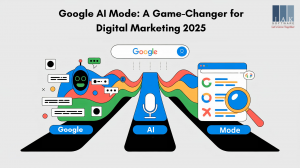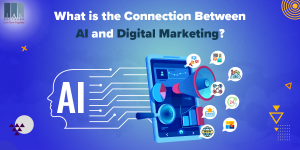2025 Tech Trends: The Digital Transformation Roadmap
The 2025 Tech trends revolution is transforming business at its core—AI-driven personalization, quantum-secure systems, and Web3 decentralization are redefining commerce. In this new landscape, integrating ORM in digital marketing strategy isn’t just optional—it’s critical to protect your brand’s integrity, maintain customer trust, and secure your competitive edge in an increasingly digital-first economy.
This guide breaks down the five most critical tech trends set to dominate 2025, explaining their business impact and how to prepare. Whether it’s leveraging AI for smarter decision-making, entering the metaverse economy, or future-proofing cybersecurity, now is the time to act.
1. AI & Hyper-Personalization: The New Customer Experience Standard
1.1 Conversational AI Reaches Human Parity
- Emotionally intelligent chatbots: Advanced NLP models will detect frustration, humor, and intent, responding with context-aware solutions that reduce escalations to human agents by 40-60%.
- Voice-first interfaces: Next-gen voice assistants will handle multi-step requests (“Find flights under $500 and schedule meetings around them”) while maintaining conversation context across devices.
- Mood-adaptive responses: Real-time sentiment analysis will adjust tone, response speed, and solution pathways based on detected emotional states.
1.2 Predictive Systems Become Operational Backbones
- Demand forecasting 2.0: AI will synthesize weather patterns, social media strategy on trends, and supply chain data to predict inventory needs with <2% error margins.
- Anticipatory service: Systems will predict issues by analyzing device data, and auto-sending fixes before problems arise.
- Microsecond pricing: Dynamic engines will adjust prices per customer based on purchase history, competitor monitoring, and real-time willingness-to-pay signals.
2. Web3 & Metaverse: Building the $5T Digital Economy (McKinsey)
2.1 Virtual Commerce Goes Mainstream
- Photorealistic virtual showrooms: AR/VR will enable “touchless trials” where users feel fabric textures via haptic gloves and see how furniture scales in their space with millimeter accuracy.
- NFT 2.0 utility: Beyond collectibles, NFTs will represent fractional real estate ownership, verifiable academic credentials, and cross-platform digital identity.
- Autonomous transactions: Smart contracts will automatically handle royalties (e.g., reselling digital art), warranty claims, and subscription renewals without human intervention.
2.2 The Decentralized Work Revolution
- Persistent VR workspaces: Always-on virtual offices will feature spatial audio (conversations get louder as avatars approach) and lifelike whiteboarding with 3D modeling tools.
- Blockchain HR systems: Tamper-proof records will verify employment history, skill certifications, and even project contributions via DAO-governed ledgers.
- Self-managing organizations: DAOs will use token-based voting to autonomously allocate budgets, approve hires, and distribute profits via pre-programmed governance rules.
3. Quantum & Cybersecurity: The Unhackable Future
3.1 Quantum-Safe Infrastructure
- QKD networks: Fiber-optic lines using quantum-entangled photons will detect eavesdropping attempts by fundamental physics principles (any observation alters the quantum state).
- Post-quantum cryptography: Lattice-based encryption will replace RSA to protect against quantum computers that could crack current protocols in minutes.
3.2 Proactive Defense Systems
- AI threat hunters: Neural networks will identify zero-day exploits by recognizing micro-patterns in code behavior rather than relying on known malware signatures.
- Biometric authentication 2.0: Continuous verification will analyze typing cadence, mouse movements, and even blink patterns to maintain persistent identity confirmation.
4. Voice & Visual Search: The UI Revolution
4.1 Voice-First Optimization
- Conversational query handling: seo specialist will prioritize full question-answer pairs (“How do I reset a Samsung Galaxy S24 without losing photos?”) over keyword stuffing.
- Snippet warfare: virtual try-ons are set to leap forward, moving beyond basic visuals to offer precise body-scan-accurate sizing and true-to-life material draping simulations for apparel.
4.2 Visual Discovery Dominates
- Multi-object recognition: Systems will identify all items in a photo (e.g., “Find this lamp, chair, and rug as a coordinated set”).
- AR commerce integrations: As technology progresses, virtual try-ons are set to leap forward, moving beyond basic visuals to offer precise body-scan-accurate sizing and true-to-life material draping simulations for apparel.
5. Sustainable Tech: The Green Mandate
5.1 Carbon-Negative Operations
- Liquid-cooled data centers: Immersion cooling will cut server energy use by 80% while repurposing waste heat for nearby buildings.
- Efficient coding practices: Developers will optimize algorithms for lower CPU cycles, reducing the carbon cost of each digital transaction.
5.2 Ethical AI Frameworks
- Bias auditing tools: To mitigate bias, automated systems will now continuously scan for demographic disparities in AI decisions, specifically in hiring, lending, and content moderation, while flagging risks in real time.
- Explainable AI interfaces: Loan applicants might receive rejections with plain-language explanations like “Declined due to 3+ late payments on accounts >$5,000 in the past 12 months.”
Implementation Roadmap
Phase 1: Digital Audit (Weeks 1-4)
- Capability mapping: Before upgrading, critically assess your existing infrastructure against 2025 tech trends—and immediately validate gaps using tools like the AWS Well-Architected Framework.
- Gap analysis: Identify critical vulnerabilities (e.g., lack of post-quantum crypto) and quick wins (voice search optimization).
Phase 2: Pilot Programs (Months 2-4)
- AI quick starts: Deploy sentiment-aware chatbots for high-volume support channels (30-50% cost reduction expected).
- Web3 experiments: Launch NFT-based loyalty programs with tangible benefits (exclusive content, event access).
Final Phase 3: Full Transformation (Months 6-12)
- Workforce reskilling: Train teams on DAO governance models and AI-augmented development tools.
- Strategic partnerships: Future-proof your business with JAK Software—expert quantum security and metaverse commerce solutions for tomorrow’s growth.
Conclusion: Act Now or Risk Falling Behind
The tech landscape of 2025 will ultimately separate industry leaders from laggards. AI, Web3, quantum, voice/visual search, and green tech aren’t trends—they’re game-changers reshaping business, security, and competition.
Key Actions to Take Today:
- Audit your tech stack – Identify gaps in AI, cybersecurity, and Web3 readiness.
- Pilot high-impact solutions – Start with AI chatbots, voice search optimization, or NFT-based loyalty programs.
- Partner with experts – Transform into a digital marketing specialist faster with JAK Software’s proven expertise.
The future belongs to businesses that adapt early. Don’t wait—future-proof your brand now and turn 2025’s disruptions into your biggest opportunities.




